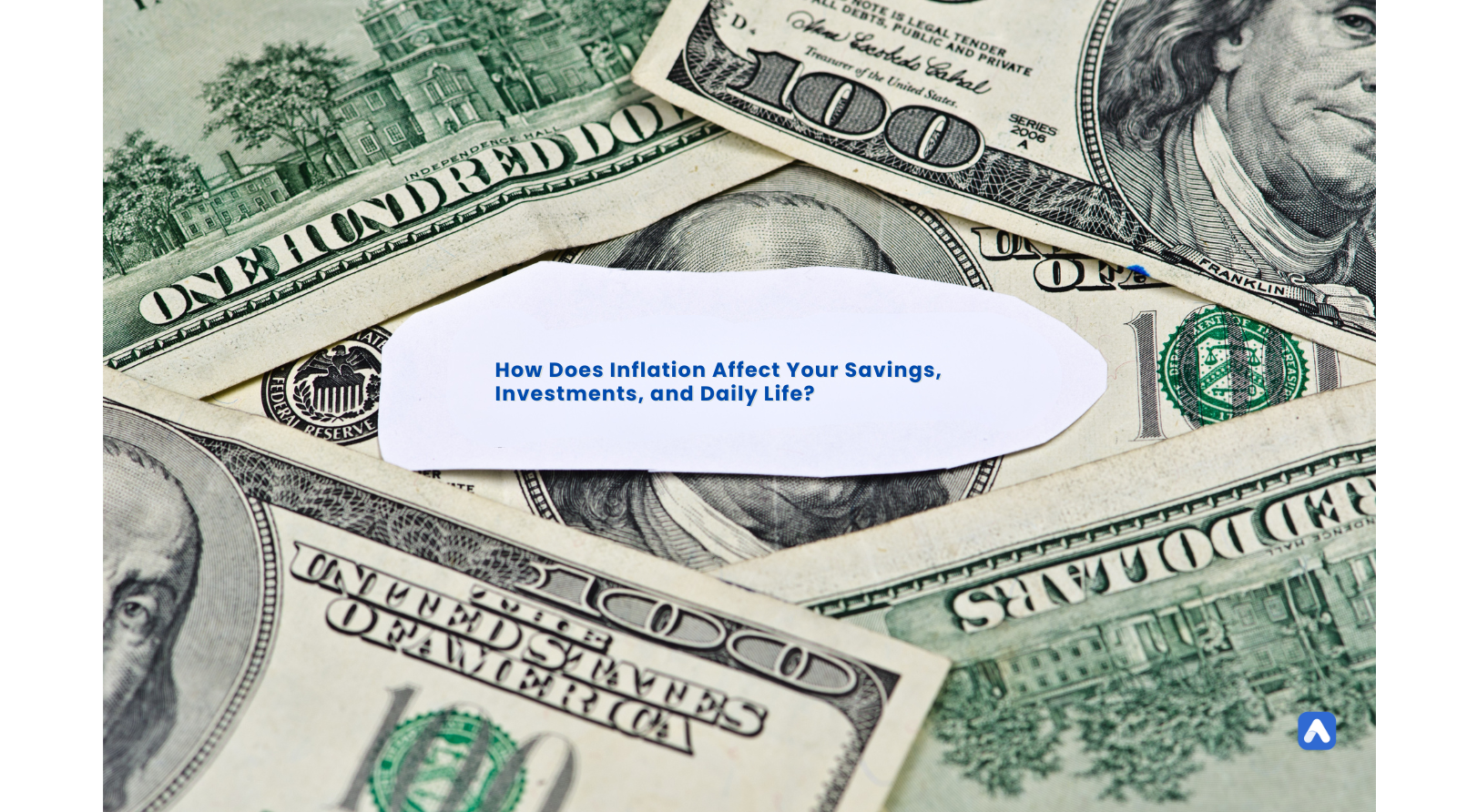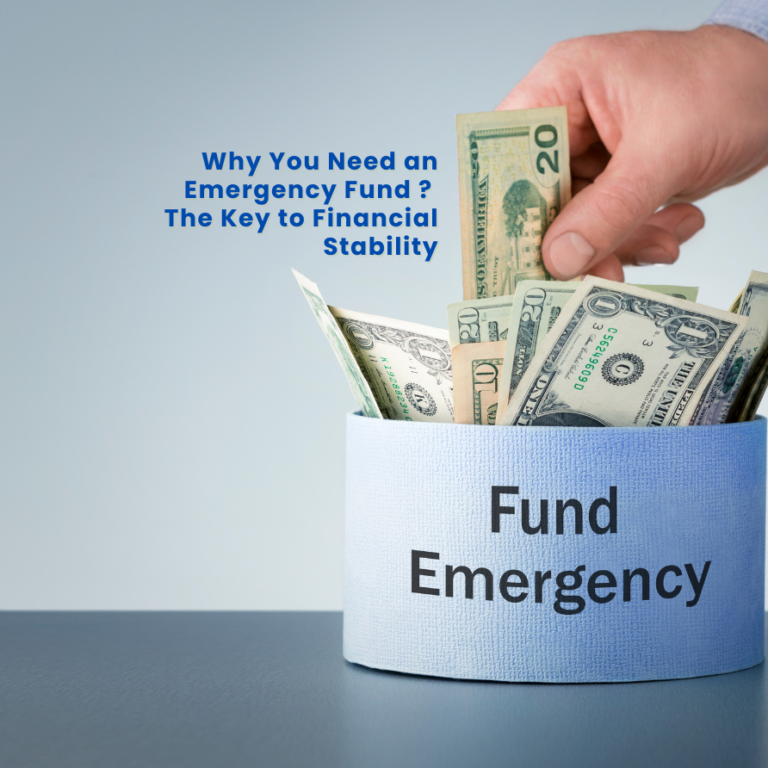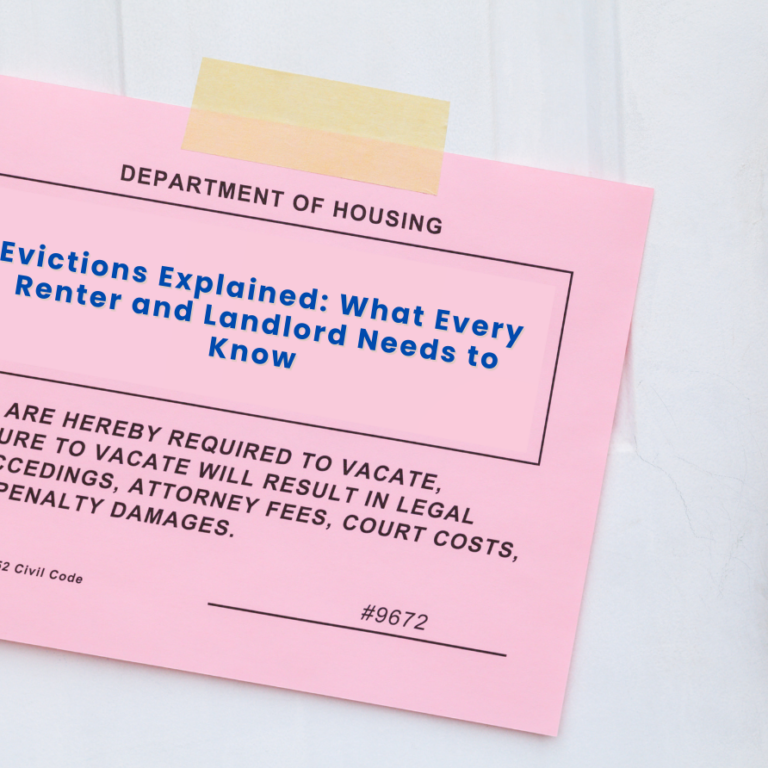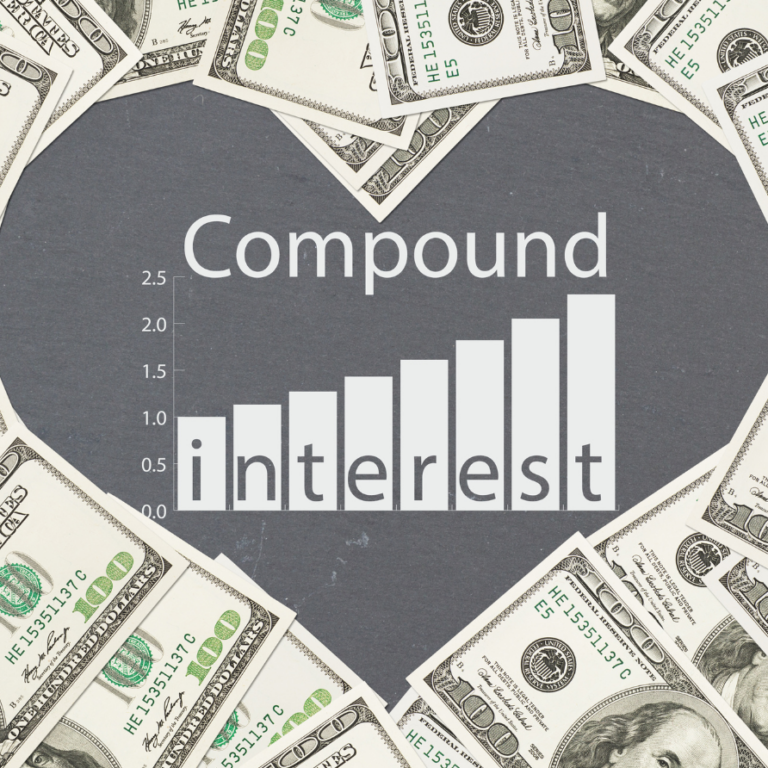How Does Inflation Affect Your Savings, Investments, and Daily Life?
Inflation : Understanding the Rising Cost of Living
Inflation, a term frequently encountered in economic discussions and news reports, refers to the general increase in the prices of goods and services over a specific period. It is a key indicator of an economy’s health, affecting everything from household expenses to business investments and government policies. When inflation rises, the purchasing power of currency diminishes, meaning that a given amount of money can buy fewer goods and services than before. This decline in purchasing power can impact consumers’ daily lives, making essentials like food, housing, and transportation more expensive. Businesses may also face rising production costs, which can lead to higher prices for consumers.
Definition and Explanation of Inflation
At its core, inflation is a monetary phenomenon. It occurs when there’s an excess supply of money in circulation relative to the available goods and services. This imbalance leads to increased demand, pushing prices higher.
Brief History and Evolution of Inflation
Inflation has been a recurring economic challenge throughout history. From ancient civilizations to modern economies, periods of inflation have often been linked to significant events such as wars, natural disasters, or government policies.
In the 20th century, the concept of inflation and its management became a central focus of economic theory and policy. Governments and central banks worldwide have developed various tools and strategies to control inflation, such as monetary policy and fiscal policy.
Importance of Understanding Inflation in Everyday Life
Inflation affects every aspect of daily life, from the cost of groceries to the value of savings and investments. Whether you’re a consumer, business owner, or investor, understanding inflation is crucial for making informed financial decisions.
Understanding inflation is crucial for several reasons:
- Personal Finance: Inflation directly impacts your purchasing power. If your income doesn’t keep pace with inflation, your standard of living may decline.
- Investment Decisions: Inflation can erode the real returns on investments. It’s essential to consider inflation when making investment choices.
- Economic Policy: Governments and central banks monitor inflation closely to make informed decisions about interest rates, taxes, and other economic policies.
- Business Planning: Businesses need to understand inflation to set prices, negotiate contracts, and plan for future costs.
Types of Inflation
Inflation can occur due to various economic factors, and it is categorized into different types based on its causes and impact. Understanding these types helps in analyzing economic conditions and formulating policies to manage inflation effectively.
Demand-Pull Inflation: This occurs when demand for goods and services exceeds supply, leading to higher prices. It is often caused by strong consumer spending, increased government expenditure, or rapid economic growth.
📈 Demand-Pull Inflation
Causes:
- Fiscal Policy: Government deficit spending increases demand.
- Monetary Policy: Lower interest rates and increased money supply stimulate demand.
- Consumer Confidence: Higher confidence leads to increased spending.
- External Shocks: Foreign demand surges can drive up prices.
Examples:
Rapid economic growth in the 1990s caused demand-pull inflation.
Government stimulus packages can increase demand and inflation.
⚙️ Cost-Push Inflation
Causes:
- Supply Shocks: Natural disasters, strikes, and political instability disrupt supply.
- Input Costs: Rising raw materials, labor, or energy prices push costs higher.
- Exchange Rates: Currency depreciation raises import costs, leading to inflation.
Examples:
The oil price shocks of the 1970s caused severe cost-push inflation.
Increases in commodity prices, such as wheat or copper, raise production costs.
💰 Built-In Inflation (Wage-Price Spiral)
Causes:
Inflationary Expectations: Higher wage demands due to expected inflation.
Indexation: Automatic wage adjustments contribute to rising costs.
Labor Union Power: Strong unions negotiate higher wages, fueling inflation.
Example:
In the 1970s, Western economies faced inflation as labor unions secured wage hikes, leading to rising production costs.
Measuring Inflation
To accurately gauge the rate of inflation, economists rely on various price indices that track changes in the cost of goods and services over time. These indices help policymakers, businesses, and individuals understand inflation trends and make informed financial decisions.
Consumer Price Index (CPI)
The CPI is a widely used measure of inflation that tracks the average change in prices of a basket of goods and services consumed by households. This basket typically includes items such as food, housing, transportation, healthcare, and education.
How is the CPI calculated?
The Consumer Price Index (CPI) is a key measure of inflation that tracks changes in the prices of a fixed basket of goods and services over time. It helps governments, businesses, and individuals understand inflation trends and make informed economic decisions.
- Basket of Goods and Services: A representative basket of goods and services is selected, reflecting the typical spending patterns of households.
- Price Collection: Prices of items in the basket are collected from various sources, including retail stores, supermarkets, and service providers.
- Weighting: Each item in the basket is assigned a weight based on its relative importance in household spending.
- Price Changes: The prices of items in the basket are compared to their prices in a base year.
- Index Calculation: The CPI is calculated by dividing the current cost of the basket by the base-year cost and multiplying by 100.
Producer Price Index (PPI)
The PPI measures the average change in prices received by domestic producers for their output. It tracks prices at various stages of production, from raw materials to finished goods.
Types of PPIs:
Why is the PPI important?
The Producer Price Index (PPI) measures the average change in prices received by domestic producers for their goods and services. Unlike the Consumer Price Index (CPI), which tracks the prices consumers pay, the PPI focuses on price changes at the wholesale or producer level, before goods and services reach the retail market. The PPI is a crucial economic indicator for various reasons:
Understanding Core vs. Headline Inflation
When measuring inflation, economists distinguish between two main types: headline inflation and core inflation. While both represent the general rise in prices over time, they differ in what they include, making them useful for different purposes in economic analysis.
How Governments and Economists Track Inflation
Tracking inflation is crucial for understanding the health of an economy and making informed decisions regarding monetary policy, wages, and economic planning. Governments and economists use a variety of tools and methodologies to measure and track inflation effectively, with the primary goal of managing it to ensure economic stability. Here’s how inflation is tracked:
- Statistical Agencies: Government statistical agencies, such as the Bureau of Labor Statistics in the U.S., collect and analyze data on prices and inflation.
- Economic Indicators: Economists analyze economic indicators like GDP growth, unemployment rates, and interest rates to assess inflationary pressures.
- Surveys and Polls: Surveys of businesses and consumers can provide insights into price expectations and inflationary trends.
- International Comparisons: Comparing inflation rates across different countries can help identify global inflationary pressures.
Causes and Drivers of Inflation
Inflation is a complex economic phenomenon influenced by various factors that affect supply and demand, currency value, exchange rates, global supply chains, resource scarcity, and economic policies.
Factors Affecting Supply and Demand:
Demand-Pull Inflation: Demand-pull inflation occurs when the demand for goods and services exceeds the available supply, driving up prices. It is one of the most common types of inflation and typically arises during periods of economic growth. When consumer spending increases, businesses may struggle to meet the higher demand, leading to higher prices as they attempt to balance the supply-demand equation.
💰 Increased Consumer Spending
Factors:
- Rising Wages: Higher incomes lead to increased spending on goods and services.
- Low-Interest Rates: Encourages borrowing, further driving demand.
🏛️ Government Spending
Impact:
- Infrastructure Projects: Boosts demand for materials and labor.
- Social Programs & Military Spending: Increases aggregate demand, especially when funded by borrowing.
📈 Investment Boom
Effects:
- Business Growth: Increased investment leads to higher labor and capital demand.
- Raw Material Demand: Industries require more resources, pushing prices higher.
⚙️ Cost-Push Inflation
Cost-push inflation occurs when production costs rise, forcing businesses to increase prices to maintain profit margins. Unlike demand-pull inflation, which is driven by rising demand, cost-push inflation stems from increasing costs of labor, raw materials, and energy.
📊 Rising Input Costs
Material & Labor Costs: Higher wages, energy, and raw material costs push production costs upward.
Oil Price Surges: Increased fuel costs affect transportation and manufacturing expenses.
⚠️ Supply Shocks
Natural Disasters: Hurricanes or droughts disrupt supply chains and reduce goods availability.
Geopolitical Tensions: Trade disputes or conflicts can cause supply shortages and higher prices.
Labor Strikes & Shortages: A lack of skilled workers can increase wages, raising production costs.

Role of Currency Value and Exchange Rates
The value of a country’s currency and its exchange rates have a crucial impact on inflation. A currency’s strength or weakness affects the cost of imports, exports, and the purchasing power of consumers. Fluctuations in exchange rates can lead to inflationary or deflationary pressures within an economy. Here’s how currency value and exchange rates influence inflation:
📉 Currency Depreciation
When a currency depreciates, it loses value relative to other currencies. This leads to higher import prices, making foreign goods more expensive.
🌍 Impact:
- Higher Import Costs: Foreign products become pricier for domestic consumers.
- Weaker Currency: Reduces purchasing power internationally.
💡 Example:
If the U.S. dollar depreciates against the euro, imported European goods will cost more for U.S. consumers.
🏦 Exchange Rate Policies
Government policies that influence exchange rates can impact inflation. These include interventions like currency devaluation or market adjustments.
📊 Effects:
- Currency Devaluation: Makes exports cheaper but increases import costs.
- Inflation Risk: A weaker currency can drive up prices of imported goods.
💡 Example:
A government deliberately devalues its currency to boost exports, but this also raises prices for imported products, potentially causing inflation.
Global Supply Chains, Resource Scarcity, and Economic Policies
The global economy is highly interconnected, with countries relying on international trade for goods, services, and resources. Disruptions in global supply chains, resource scarcity, and various economic policies can have profound effects on inflation. These factors often influence prices, production costs, and the availability of goods and services, contributing to inflationary pressures in different ways.
🌍 Global Supply Chain Disruptions
Disruptions in global supply chains, such as the COVID-19 pandemic or geopolitical tensions, can lead to shortages of goods and higher prices.
⛏️ Resource Scarcity
Limited availability of natural resources, such as oil or minerals, increases production costs and contributes to inflation.
🏦 Monetary Policy
Central banks influence inflation by adjusting interest rates and controlling the money supply through open market operations.
📊 Fiscal Policy
Government tax cuts or increased spending impact aggregate demand and inflation, sometimes leading to economic overheating.
Effects of Inflation on the Economy
Inflation can have significant impacts on various aspects of the economy, including purchasing power, business costs, consumer prices, interest rates, wages, and employment.
Impact on Purchasing Power and Standard of Living
Inflation can significantly impact individuals and households by eroding the purchasing power of money and affecting the overall standard of living. As prices rise, consumers find that their money buys fewer goods and services, and this can have far-reaching consequences on everyday life, savings, investments, and long-term financial planning.
- Reduced Purchasing Power: As inflation rises, the purchasing power of money decreases. This means that consumers can buy fewer goods and services with the same amount of money. For example, if the inflation rate is 5% and your salary increases by 3%, your real income has actually decreased.
- Erosion of Savings: Inflation can erode the value of savings over time, especially if the interest rate on savings accounts is lower than the inflation rate. For instance, if you have $10,000 in a savings account with a 2% interest rate and inflation is 3%, the real value of your savings will decrease by 1% each year.
- Lower Standard of Living: For individuals on fixed incomes, such as retirees, inflation can significantly reduce their standard of living. As prices rise, they may struggle to afford basic necessities like food, housing, and healthcare.
How Inflation Affects Business Costs and Consumer Prices
Inflation has a direct impact on both business costs and consumer prices. As inflation rises, businesses face higher expenses for raw materials, labor, and production. These increased costs are often passed on to consumers in the form of higher prices. Understanding this relationship is essential for grasping how inflation affects the overall economy, business operations, and consumer behavior.
- Increased Production Costs: Businesses may face higher costs for raw materials, labor, and energy, which can lead to higher production costs. For example, if the price of oil increases, transportation costs for businesses will rise, leading to higher production costs.
- Price Increases: To maintain profit margins, businesses may pass on these increased costs to consumers in the form of higher prices. This can lead to a cycle of rising prices, known as a price-wage spiral.
- Menu Costs: Businesses may incur costs associated with changing prices, such as updating price lists, relabeling products, and reprogramming cash registers. These costs can be significant, especially for businesses with many products.

Effects on Interest Rates, Wages, and Employment
Inflation has a broad and profound impact on key economic factors like interest rates, wages, and employment. These factors are intricately linked, as changes in one can lead to adjustments in the others. Understanding these effects is essential for navigating both personal financial decisions and business strategies in an inflationary environment.
- Interest Rates: Central banks often raise interest rates to combat inflation. Higher interest rates can make borrowing more expensive, discouraging investment and consumption. This can slow down economic growth and lead to job losses.
- Wages: As inflation rises, workers may demand higher wages to maintain their purchasing power. This can lead to a wage-price spiral, where higher wages lead to higher prices, which in turn leads to higher wage demands. This can exacerbate inflationary pressures.
- Employment: High inflation can create uncertainty and discourage investment, which can lead to job losses and higher unemployment rates. Businesses may be hesitant to hire new workers or invest in new projects if they are uncertain about future economic conditions.
It’s important to note that the effects of inflation can vary depending on the severity and duration of the inflationary period. Moderate inflation can be manageable, while high inflation can have significant negative consequences for the economy.
Inflation and Personal Finances
Inflation can have a significant impact on personal finances, affecting savings, loans, investments, and budgeting.
How Inflation Impacts Savings, Loans, and Investments
Inflation has a significant influence on personal and business financial decisions, particularly when it comes to savings, loans, and investments. As inflation rises, it erodes the real value of money, meaning the purchasing power of funds decreases over time. This can impact individuals’ ability to save for the future, manage debt, and grow wealth through investments.
Savings:
- Eroded Purchasing Power: As inflation rises, the purchasing power of savings decreases. For instance, if you have $10,000 in a savings account with a 2% interest rate and inflation is 3%, the real value of your savings will decline by 1% each year.
- Lower Real Returns: The real return on savings is the nominal interest rate minus the inflation rate. If inflation exceeds the interest rate, the real return becomes negative, meaning you lose money in real terms.
Loans:
- Decreased Real Debt Burden: Inflation can benefit borrowers as the real value of their debt decreases over time. For example, if you have a fixed-rate mortgage and inflation rises, the real value of your mortgage payments decreases.
- Increased Interest Rates: However, lenders may adjust interest rates to account for inflation, so the advantage for borrowers may be limited.
Investments:
- Stock Market: Historically, stocks have been a good hedge against inflation. Companies can often raise prices to offset rising costs, which can boost their earnings and stock prices.
- Real Estate: Real estate can also be a good inflation hedge, as property values tend to appreciate over time, especially in areas with strong demand.
- Bonds: Bonds are generally less effective at protecting against inflation. Fixed-income bonds, such as Treasury bonds, may not keep pace with rising prices. However, inflation-protected bonds, like Treasury Inflation-Protected Securities (TIPS), are designed to adjust their value to compensate for inflation.
Strategies for Inflation-Proofing Personal Finances
Inflation can erode the value of money, making it essential to adopt strategies that protect your wealth and purchasing power. By adjusting your financial habits and diversifying your investments, you can better navigate periods of rising prices and secure your financial future.
- Diversify Investments: A diversified investment portfolio can help reduce risk and protect against inflation. Consider investing in a mix of stocks, bonds, real estate, and commodities.
- Invest in Tangible Assets: Tangible assets, such as real estate and precious metals, can be a good hedge against inflation, as their value tends to increase with rising prices.
- Adjust Your Budget: Regularly review and adjust your budget to account for rising prices. Prioritize essential expenses and cut back on non-essential spending.
- Increase Your Income: Seek opportunities to increase your income through promotions, side hustles, or additional qualifications.
- Pay Off High-Interest Debt: Prioritize paying off high-interest debt to reduce the impact of inflation on your finances.
- Consider Inflation-Protected Securities: Invest in inflation-protected securities, such as TIPS, to protect your savings from the effects of inflation.
- Shop Smart: Look for deals, discounts, and coupons to save money on groceries and other purchases.
- Cook at Home: Eating at home can be more cost-effective than eating out.
- Reduce Energy Consumption: Conserve energy by using energy-efficient appliances and reducing your energy usage.
- Consider Alternative Transportation: Explore alternative transportation options, such as biking, walking, or public transportation, to reduce transportation costs.
Inflation and Investment Strategies
Inflation can significantly impact investment returns. Understanding how different asset classes perform during inflationary periods can help investors make informed decisions.
Impact of Inflation on Different Asset Classes:
Stocks:
- Potential for High Returns: Historically, stocks have been a good hedge against inflation. Companies can often raise prices to offset rising costs, which can boost their earnings and stock prices.
- Sector-Specific Performance: Not all sectors perform equally well during inflationary periods. Sectors like energy, materials, and financials, which benefit from rising commodity prices and interest rates, may outperform others.
- Dividend-Paying Stocks: Dividend-paying stocks can provide a steady income stream, which can help offset the effects of inflation.
- Growth Stocks: Growth stocks, which rely on future earnings growth, may be more vulnerable to inflationary pressures, especially if interest rates rise.
Bonds:
- Fixed-Income Bonds: Traditional fixed-income bonds, such as Treasury bonds and corporate bonds, are generally less effective at protecting against inflation. As inflation rises, the fixed interest payments on these bonds become less valuable in real terms.
- Inflation-Protected Bonds: Treasury Inflation-Protected Securities (TIPS) are designed to adjust their principal value to compensate for inflation. They offer a relatively safe and effective way to hedge against inflation.
- High-Yield Bonds: High-yield bonds, also known as junk bonds, offer higher interest rates to compensate for their higher risk. However, during inflationary periods, the risk of default on these bonds may increase.
Real Estate:
- Appreciation Potential: Real estate can be a good inflation hedge, as property values tend to appreciate over time, especially in areas with strong demand.
- Rental Income: Rental income can provide a steady stream of cash flow, which can help offset the effects of inflation.
- Leverage: Using leverage, such as mortgages, can amplify both the gains and losses from real estate investments.
- Interest Rate Risk: Rising interest rates can make it more expensive to finance real estate purchases, which may dampen demand and property prices.
Inflation-Adjusted Returns: Real vs. Nominal Returns
Nominal Return: This is the stated rate of return on an investment, without adjusting for inflation. It represents the increase in the dollar value of the investment.
Real Return: This is the nominal return adjusted for inflation. It reflects the actual purchasing power of the investment.
To calculate the real return, we can use the following formula:
Real Return = (Nominal Return – Inflation Rate) / (1 + Inflation Rate)
For example, if a stock has a nominal return of 10% and the inflation rate is 3%, the real return is approximately 6.7%.
Popular Inflation Hedges:
- Commodities: Commodities, such as gold, oil, and agricultural products, can be a good hedge against inflation, especially during periods of high inflation. However, commodity prices can be volatile, and investing in commodities directly can be risky.
- Gold: Gold is often considered a safe-haven asset and a hedge against inflation. As the value of currencies declines due to inflation, the demand for gold tends to increase.
- TIPS (Treasury Inflation-Protected Securities): TIPS are a type of government bond that adjusts its principal value to account for inflation. They offer a relatively safe and effective way to hedge against inflation.
Government and Central Bank Responses to Inflation
Governments and central banks play a crucial role in managing inflation to ensure economic stability. They employ various monetary policies, fiscal policies, and regulatory measures to control inflationary pressures and maintain a balanced economy. Below are the key strategies used to combat inflation.
The Role of Central Banks in Managing Inflation
Central banks, such as the Federal Reserve in the United States, the European Central Bank (ECB), and the Bank of England, are responsible for implementing monetary policy to control inflation.
Monetary Policy Tools: Monetary policy refers to the actions taken by a country’s central bank to regulate inflation, stabilize the economy, and promote economic growth. The primary objective of monetary policy tools is to manage the money supply and influence interest rates to control inflation. Below are the key monetary tools used by central banks to curb rising prices.
📈 Interest Rate Adjustments
Raising Interest Rates: Central banks raise rates to reduce borrowing and spending, slowing economic activity and inflation.
Lowering Interest Rates: Used during recessions to boost borrowing, investment, and economic growth.
💰 Quantitative Easing (QE)
Central banks buy government bonds to inject liquidity into the economy, lowering long-term interest rates and stimulating growth.
📊 Open Market Operations
By buying securities, central banks add money into the economy; selling securities reduces the money supply.
🏦 Reserve Requirements
Central banks regulate the amount banks must hold in reserve, controlling how much they can lend.
Fiscal Policy Responses and Government Spending Adjustments
Fiscal policy refers to how a government adjusts its spending and taxation to influence the economy. During periods of high inflation, governments use fiscal tools to reduce excess demand, control price rises, and maintain economic stability. Below are the key fiscal policy responses used to manage inflation.
Fiscal Stimulus:
- During economic downturns, governments may increase spending on infrastructure, education, or social programs to stimulate demand and boost economic growth.
- Tax cuts can also stimulate demand by increasing disposable income. However, excessive fiscal stimulus can lead to inflationary pressures, especially if it coincides with expansionary monetary policy.
Fiscal Austerity:
- To combat inflation, governments may reduce spending or increase taxes to reduce aggregate demand. Fiscal austerity can help to cool down the economy and reduce inflationary pressures, but it may also slow down economic growth and lead to job losses.
Historical Case Studies of Inflation
Throughout history, various countries have experienced significant inflationary periods due to economic policies, supply shocks, wars, and financial crises. Below are some notable case studies that illustrate the causes and consequences of inflation.
Hyperinflation Examples
Zimbabwe (Early 2000s): Zimbabwe experienced one of the worst episodes of hyperinflation in history during the early 2000s, with inflation reaching an estimated 89.7 sextillion percent (10²³%) by November 2008. This crisis was driven by economic mismanagement, excessive money printing, and political instability.
Causes:
- Excessive government spending to fund social programs and a war in the Congo.
- Political instability and corruption.
- Economic mismanagement, including price controls and currency controls.
Consequences:
- Rapidly declining currency value.
- Shortages of essential goods.
- Economic collapse.
- Social unrest and political instability.
Lessons Learned:
- The importance of sound fiscal and monetary policies.
- The dangers of excessive money printing.
- The need for political stability and good governance.
Weimar Germany (1920s): The Weimar Republic (Germany) experienced one of the most extreme cases of hyperinflation in history between 1921 and 1923. By November 1923, prices were doubling every few hours, and the exchange rate had collapsed to 4.2 trillion German marks per 1 U.S. dollar.
Causes:
- Reparation payments imposed by the Treaty of Versailles.
- Excessive money printing to finance these payments.
- Economic instability and political turmoil.
Consequences:
- Hyperinflation, leading to the collapse of the German currency.
- Economic hardship and social unrest.
- Rise of extremist political parties, including the Nazi Party.
Lessons Learned:
- The importance of fiscal discipline and sound monetary policy.
- The dangers of printing money to finance government spending.
- The need for political stability and economic reforms.
Periods of High Inflation in the U.S. (1970s Stagflation): The 1970s was a period of high inflation, stagnant economic growth, and high unemployment in the United States, a rare combination known as stagflation. Unlike traditional inflation, which is often accompanied by economic growth, stagflation presents a unique challenge where rising prices coincide with economic stagnation.
Causes:
- Oil shocks of the 1970s, which increased energy costs.
- Expansionary monetary policy, which led to excessive money supply growth.
- Wage-price spiral, where rising wages led to higher prices, which in turn led to higher wage demands.
Consequences:
- Economic stagnation and high unemployment.
- Declining standard of living.
- Social unrest and political polarization.
Lessons Learned:
- The importance of a balanced approach to monetary and fiscal policy.
- The need to address supply-side shocks, such as oil price increases.
- The dangers of excessive government intervention in the economy.
Lessons from Other Countries’ Inflation Experiences
- Independent Central Banks: Independent central banks can make decisions based on economic fundamentals, without political interference.
- Sound Fiscal Policy: Governments should maintain fiscal discipline and avoid excessive spending to prevent inflationary pressures.
- Price Controls: Price controls can be ineffective and may even exacerbate inflation. They can lead to shortages, black markets, and lower quality goods.
- Exchange Rate Policies: Countries should carefully manage their exchange rate policies to avoid inflationary pressures. Sudden changes in exchange rates can lead to price instability.
- International Cooperation: International cooperation is essential to address global inflationary pressures and coordinate economic policies. Countries should work together to stabilize exchange rates, coordinate monetary policy, and address global supply chain disruptions.
Future of Inflation and Long-Term Outlook
The future of inflation is a complex issue influenced by a variety of factors, including global economic trends, technological advancements, and geopolitical events.
Inflation in a Globalized Economy
In a globalized economy, inflation can be influenced by several factors:
- Global Supply Chain Disruptions: Disruptions in global supply chains, such as those caused by natural disasters, geopolitical tensions, or pandemics, can lead to shortages of goods and higher prices.
- Commodity Price Shocks: Fluctuations in commodity prices, such as oil, metals, and agricultural products, can have a significant impact on inflation.
- Exchange Rate Fluctuations: Changes in exchange rates can affect the cost of imported goods and services. A weaker currency can lead to higher import prices, contributing to inflation.
- Trade Policies: Trade policies, such as tariffs and trade agreements, can impact the cost of goods and services, affecting inflation.
Potential Effects of Technological Advancements and Digital Currencies
Technological advancements can have both inflationary and deflationary effects:
- Deflationary Pressures: Technological advancements can increase productivity and lower production costs. This can lead to lower prices for goods and services, reducing inflationary pressures.
- Inflationary Pressures: However, rapid technological change can also disrupt traditional industries and lead to job losses, which can contribute to social and economic instability. This, in turn, could lead to inflationary pressures.
Digital currencies, such as Bitcoin and Ethereum, have the potential to disrupt the traditional financial system. While they offer certain advantages, such as faster transactions and lower fees, they also pose risks, such as price volatility and regulatory uncertainty. The long-term impact of digital currencies on inflation is still unclear.
Preparing for Future Inflationary Trends
To prepare for future inflationary trends, individuals and businesses can consider the following strategies:
- Diversify Investments: Investing in a diverse range of assets, such as stocks, bonds, real estate, and commodities, can help to mitigate the impact of inflation.
- Hedge Against Inflation: Investing in inflation-protected securities, such as Treasury Inflation-Protected Securities (TIPS), can help to preserve purchasing power.
- Monitor Economic Indicators: Stay informed about economic indicators, such as inflation rates, interest rates, and GDP growth, to anticipate potential inflationary pressures.
- Adjust Budgeting and Spending: Regularly review and adjust budgets to account for rising prices. Prioritize essential expenses and cut back on non-essential spending.
- Increase Financial Literacy: Educate yourself about personal finance, investing, and economic trends to make informed decisions.
- Build an Emergency Fund: Having an emergency fund can help you weather economic downturns and unexpected expenses.
- Consider Alternative Investments: Explore alternative investments, such as real estate or commodities, which may offer protection against inflation.
Conclusion: Navigating the Complexities of Inflation for Financial Stability and Growth
Inflation is an inevitable and multifaceted economic phenomenon that affects every aspect of our financial lives, from personal savings and investments to broader economic trends. Understanding inflation—its causes, measurement, impacts, and management—is essential for making informed decisions that protect purchasing power, preserve wealth, and ensure long-term financial stability. Whether you are an individual managing personal finances, a business owner planning for growth, or an investor seeking to hedge against rising prices, adopting proactive strategies to navigate inflationary pressures is critical.
Key Insights:
Understanding Inflation :
- Inflation refers to the general rise in prices over time, eroding the purchasing power of money. It is influenced by factors such as supply and demand imbalances, currency value fluctuations, global supply chain disruptions, and government policies.
- Measuring inflation through indices like the Consumer Price Index (CPI) and Producer Price Index (PPI) provides valuable insights into economic trends and helps guide monetary and fiscal policy decisions.
Types and Causes of Inflation :
- Demand-pull inflation occurs when demand outstrips supply, often during periods of rapid economic growth.
- Cost-push inflation arises from rising production costs, such as higher wages, raw material prices, or energy costs.
- Built-in inflation, or the wage-price spiral, reflects expectations of future inflation, leading to higher wages and prices in a self-reinforcing cycle.
Impact on the Economy and Personal Finances :
- Inflation reduces purchasing power, erodes savings, and increases the cost of living, particularly affecting individuals on fixed incomes.
- Businesses face higher production costs, which are often passed on to consumers in the form of higher prices, creating a feedback loop of rising costs.
- Interest rates, wages, and employment are also significantly affected, with high inflation potentially leading to economic instability, reduced investment, and job losses.
Strategies to Mitigate Inflation’s Effects :
- Diversification : A well-diversified investment portfolio that includes stocks, bonds, real estate, and commodities can help mitigate risk and protect against inflation.
- Inflation-Protected Securities : Investments like Treasury Inflation-Protected Securities (TIPS) adjust their value to account for inflation, preserving purchasing power.
- Tangible Assets : Real estate, precious metals, and other tangible assets often appreciate in value during inflationary periods, serving as effective hedges.
- Budget Adjustments : Regularly reviewing and adjusting budgets to prioritize essential expenses while cutting back on non-essential spending can help manage rising costs.
- Income Growth : Seeking opportunities to increase income through promotions, side hustles, or additional qualifications can offset the effects of inflation.
Government and Central Bank Responses :
- Central banks use tools like interest rate adjustments, quantitative easing, and open market operations to control inflation and stabilize the economy.
- Fiscal policies, including government spending and taxation, play a crucial role in managing aggregate demand and addressing inflationary pressures.
- Historical case studies, such as hyperinflation in Zimbabwe and Weimar Germany, highlight the dangers of excessive money printing and the importance of sound fiscal and monetary policies.
Final Thoughts:
Inflation is not just a macroeconomic concept—it has tangible, everyday implications for individuals, businesses, and governments. While moderate inflation is a sign of a healthy, growing economy, unchecked or high inflation can lead to significant challenges, including reduced standards of living, economic stagnation, and social unrest. By understanding the drivers of inflation and implementing proactive strategies, individuals and businesses can safeguard their financial futures and thrive in an ever-changing economic landscape.
Ultimately, navigating inflation requires a combination of knowledge, discipline, and adaptability. By staying informed, diversifying investments, and adjusting financial habits, you can mitigate the adverse effects of inflation and position yourself for long-term success. Whether through strategic asset allocation, inflation-proofing personal finances, or leveraging government and central bank policies, the key lies in taking deliberate and informed actions to protect your wealth and purchasing power in an inflationary world.






